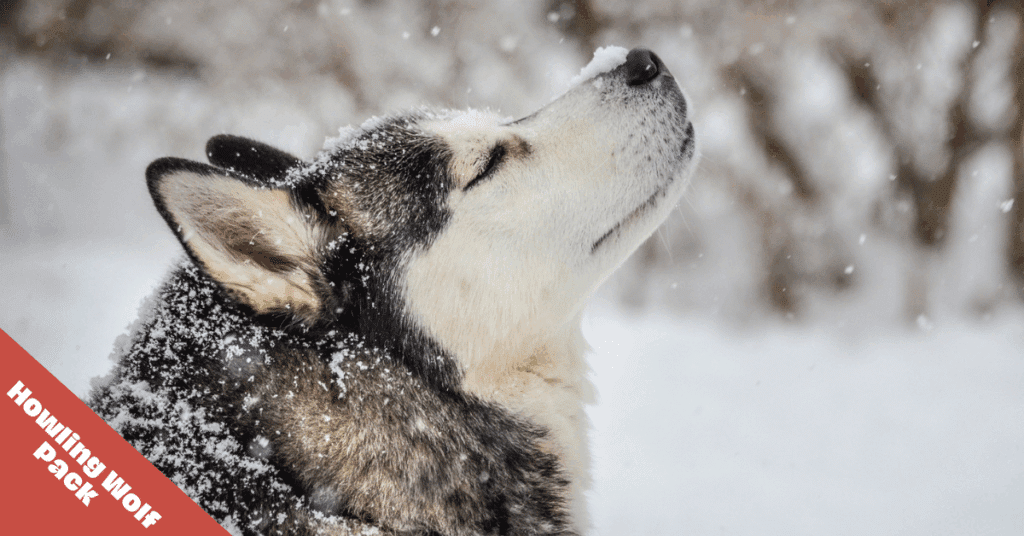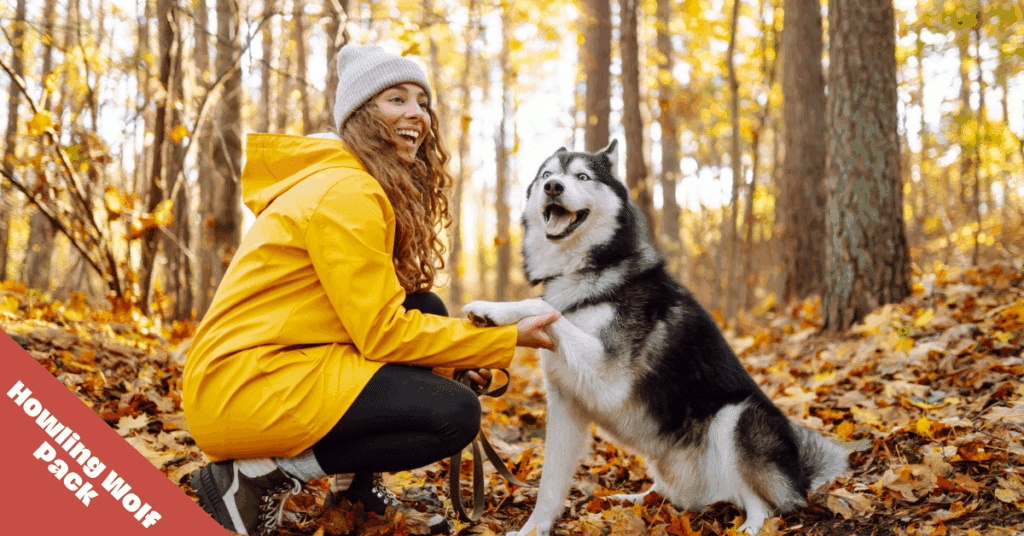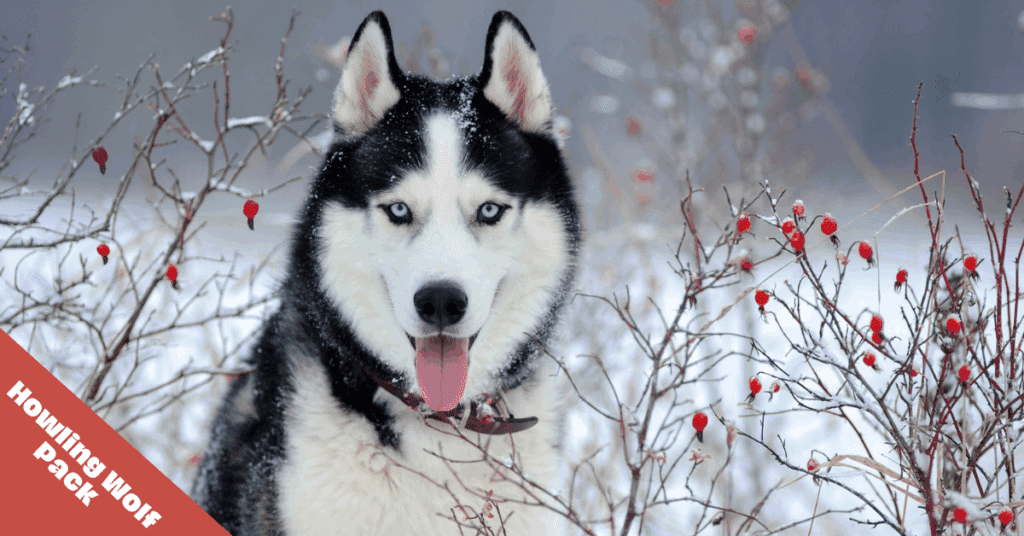The Siberian Husky is best known for its striking appearance and spirited (and stubborn) nature. Originating from northeastern Siberia, these dogs were initially bred by the Chukchi people for sledding and herding reindeer, thriving in harsh Arctic conditions.
Their friendly disposition makes them a great companion for some families. However, they can be a lot to deal with, so prospective pet parents should be prepared for regular outdoor adventures to keep their furry family members happy and healthy.
Choosing a Siberian Husky means welcoming an active and affectionate member into your family. Keep reading to see if this breed is right for you.
Breed Profile: Siberian Husky
Origin: Siberia
Size: 21-23.5 inches (male); 20-22 inches (female)
Weight: 45-60 pounds (male); 35-50 pounds (female)
Energy level: ⭐⭐⭐⭐⭐
Trainability: ⭐⭐⭐
Grooming:⭐⭐⭐
Shedding: ⭐⭐⭐⭐⭐
Sociability: ⭐⭐⭐⭐⭐

Origin and History of the Siberian Husky
Siberian Huskies come from the icy realms of Siberia, where they were bred for their endurance and adaptability to family life.
Developed centuries ago by the Chukchi people of Northern Siberia, the Siberian Husky was bred for pulling light loads over long distances for their nomadic communities. Their ability to endure harsh conditions made them indispensable to the Chukchi community.
In the early 20th century, these dogs were introduced to North America, quickly gaining recognition for their sledding capabilities. Their participation in events like the All-Alaska Sweepstakes showcased their speed and endurance, solidifying their reputation as hardy dogs.
The American Kennel Club officially recognized the Siberian Husky in 1930. Nine years later, the Siberian Husky was recognized by the Canadian Kennel Club. The CKC’s breed standard outlines the ideal characteristics, temperament, and appearance of the breed, ensuring that the dogs remain capable of fulfilling their original role.
Personality
Siberian Huskies are known for their friendly demeanour. They tend to be rather outgoing, with an eager and happy disposition. They are known for being pretty mischievous, but many dog owners agree this only adds to their charm!
These intelligent dogs possess a strong-willed and independent spirit. They don’t listen to commands as well as breeds like German Shepherds and Labrador Retrievers, so you may need to bribe them with a treat or two!
Siberian Huskies are also known for their sociability. They make friends easily and quickly with both humans and dogs. They do have a very strong prey drive, which necessitates caution around smaller animals, including cats. If you are a cat parent, then early socialization is highly recommended.
Ideal Home
Siberian Huskies are energetic and intelligent, so you can expect them to open up your bedroom door at 7 am on a Saturday morning, ready for a hike!
Homes with spacious yards are ideal because these dogs need plenty of space to stretch their legs. You should also expect a hole or two in your yard as your Husky shows off their impressive digging skills!
Due to their intelligence, Siberian Huskies benefit from regular mental challenges. Interactive toys, puzzle feeders, and training sessions can keep their minds engaged, reducing the likelihood of destructive behaviours stemming from boredom.
Huskies are very social and do their best with near-constant companionship. They don’t like being alone for an extended period. They are pack animals, after all. If your Husky is left alone, you may find they’ve hopped the fence in search of new friends, so a high fence is a must!
Originating from cold climates, Siberian Huskies are well-suited to cooler environments. However, they can adapt very easily to warmer climates, especially with proper shade and plenty of fresh water.

Health
Siberian Huskies are generally pretty healthy, especially if you work with a quality breeder. However, like all breeds, they can be prone to certain health issues.
Some common health problems Huskies are known for, include:
- Hip dysplasia: This genetic condition affects the hip joint’s development, leading to very early arthritis-like symptoms (usually before the dog is three). Many large dogs have issues with this condition and may even require surgery. However, Siberian Huskies are surprisingly healthy, with only 2.3% developing hip dysplasia.
- Eye disorders: There are plenty of genetic eye disorders that dogs can develop. Around 7.5% of Huskies have some sort of serious eye issue, like progressive retinal atrophy.
- Zinc-responsive dermatosis: This skin disorder arises from inadequate zinc absorption, resulting in hair loss and skin lesions, particularly around the face and joints. Dietary supplements, under veterinary guidance, can effectively manage this condition.
- Hypothyroidism: An underactive thyroid gland can lead to symptoms such as lethargy, weight gain, and skin problems. Luckily, this condition is very treatable with replacement hormone medication.
Regular veterinary care can help catch potential problems early and treat them before they cause further problems.
Training
Training a Siberian Husky requires a lot of patience and consistency. While they’re intelligent, they’re also very independent and very much know what they do and don’t want.
Begin socializing your Husky puppy as early as possible. Introduce them to various environments, people, and other animals to help them build confidence. The idea is that the more things a puppy is exposed to, the less likely they are to be fearful later.
As Siberian Huskies can be very strong-willed, consistent obedience training is essential to establish boundaries and ensure safety. Focus on basic commands such as “sit,” “stay,” and “come,” using positive reinforcement techniques like treats and praise.
Regular training sessions can help your Husky grasp these commands faster and keep their brain well-exercised. Consider enrolling your Husky in professional obedience classes. These structured environments provide socialization opportunities and expert guidance, benefiting both you and your fur baby.
Exercise
Huskies require lots of physical activity to maintain their health. They need 1-2 hours of daily exercise, including activities like walking, running, and agility training, to prevent boredom.
Ideally, this will be split into one session in the morning and another in the evening.
Exercise should be a little more moderate for Husky puppies, though. A common guideline is 5 minutes of exercise per month of age, performed twice daily. For example, a 4-month-old puppy would benefit from two 20-minute sessions each day.
Don’t forget to consider the weather conditions when exercising your Husky, due to their thick, insulating coat. In warmer climates, plan to exercise your pup in the cooler periods of the day, like early in the morning.

Grooming
Siberian Huskies are big floofers! They have a thick double coat, which serves as their protection in harsh climates.
Huskies will typically go through two large shedding periods each year, which is usually called “blowing their coats.” Typically, this occurs as the weather changes in the spring and fall. During these times, you may have to brush them more frequently to remove loose fur and prevent matting.
Outside of these heavy shedding periods, a weekly brushing routine is usually plenty to keep their coat under control, though you can expect their fur to decorate your furniture all year round!
Siberian Huskies do not need to bathe all that often. Overbathing can strip the oil from their skin, leading to dryness (and eventually skin problems). Bathing every few months or when your dog gets particularly dirty is plenty!
Siberian Huskies need regular nail trimming, ear cleaning, and teeth brushing, just like any other dog breed. You can check their nails and clean their ears weekly when you brush them. Preferably, you should brush their teeth every day (or at least every three days).
Introduce your grooming routine to your puppy as soon as you bring them home, even if they don’t need much brushing at an extremely young age. This early introduction will help your puppy get used to the grooming tools and make grooming much easier later on.
How Much Do Siberian Huskies Cost?
Adopting
Bringing a husky home can be very exciting, but it’s also important to consider the financial commitment involved. Buying from a rescue can be a little cheaper. For instance, the Scarborough Animal Shelter has a fee of $185 to $215 to adopt a dog. This includes licensing and other fees, too.
Huskies are often at animal shelters, thanks to their popularity. While you may have to wait a few months for a suitable Husky to pop up at your local shelter, they aren’t exceedingly rare like some other purebred dogs.
Many owners purchase a Husky as a puppy, only to realize they’ve bit off more than they chew as the dog gets older. In fact, they’re one of the most common purebred dogs found at animal shelters.
No matter where you adopt your dog from, that fee typically comes with several inclusions. For instance, quality breeders and rescues will often cover vaccination costs and spaying or neutering. These can cost several hundred at your local vet.
Buying from a breeder
In Canada, the cost of a Siberian Husky puppy varies based on many different factors, like the breeder’s reputation and your exact location. On average, you can expect to pay between $2,000 and $4,000 CAD for a well-bred puppy. Some reputable breeders may charge between $2,000 and $4,000 CAD if the puppy is “show quality” or particularly well-bred.
Working with a reputable breeder is important. You can consult the CKC to find an ethical breeder through their puppy list.
A responsible breeder will prioritize the health and well-being of their dogs. They should provide health clearances for the puppy’s parents and ensure that the puppies are raised in a stimulating environment with proper socialization.
Final Thoughts
Bringing a Siberian Husky home can be a very rewarding journey filled with companionship. As you embark on this adventure, it’s essential to ensure that your furry family member receives the best care possible. One crucial aspect of this is securing comprehensive pet insurance to protect against unexpected veterinary expenses.
FAQs
Is a Siberian Husky a good family dog?
Yes, Siberian Huskies can make great family dogs for the right family. They’re known for being very friendly and getting along with children and other pets. They can even get along with cats when properly socialized! However, their high energy levels require families to provide ample exercise and mental stimulation to keep them happy and well-behaved. They can be a lot of work, especially when they are younger.
Is a Siberian Husky a high-maintenance dog?
Siberian Huskies can be considered high-maintenance dogs due to their high intelligence and exercise needs. They won’t be happy sitting around the house for much of the day! They also require a lot of companionship, potentially developing isolation anxiety. While they don’t require as much grooming as you might think, all of these extra activities often mean a lot of work for their families.
Do Siberian Huskies bark a lot?
Siberian Huskies can be a bit noisy, but they don’t tend to bark more than any other breeds. They absolutely aren’t as yappy as many smaller breeds, like Pomeranians. Instead, they tend to “talk,” which isn’t quite as loud as barking. While they don’t tend to bark very loudly, do expect them to vocalize often.
